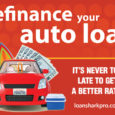
For most people with bad credit, the best auto loans are the ones with the lowest rates. Unless you’re sitting on a huge money pile, chances are you’ll end up finding the best auto loans for people with bad credit rates when buying your next vehicle.
If you’re here, you’re not alone. Americans borrowed an all-time high of $1 trillion to finance their cars at the end of 2015, according to CNN. A full 86% of new car buyers finance their purchase, according to Experian, with the average new car loan topping $29,500.
Poor credit history isn’t always reflective of your character or work ethic, but it does affect the way a bank or lender sees you. If you have a poor credit rating, it’s nearly impossible to secure a traditional auto loan on your own.
Best Auto loans for people with bad credit
Here are the best lenders and loan services of auto loans for people with bad credit:
Auto Credit Express
Auto Credit Express specializes in getting auto loans for people with bad credit, and that knowledge always turns into more options and better interest rates. This company works with customers who have already stated bankruptcy, and it allows loans to special auto finance dealers. (These can include “buy here, pay here” and rent-to-own lots — not options we normally recommend, but if you’re truly in a bind, you may not have a choice.)
Auto Credit Express doesn’t restrict you from applying based on loan amount, vehicle age, or mileage, which is particularly crucial for people with bad credit who may not be able to consider newer, more expensive cars. The company has an A+ from the Better Business Bureau.
What are the Typical Requirements?
While there is no nationwide standard, here at Auto Credit Express the typical requirements for someone applying for a vehicle loan are as follows:
- Monthly income of at least $1,500 gross
- 18 Years of Age or Older
- Current resident of the United States or Canada
- Current legal American or Canadian citizen or legal resident
- Employed full time or has guaranteed fixed income
Who It’s Good For
Bad-credit buyers who want a lot of options will want to check out Auto Credit Express, which eschews common restrictions in favor of considering loan applications on a case-by-case basis.
Who Should Pass
You won’t be able to get a loan from Auto Credit Express to buy a car from a private seller, which is a bummer for anyone hoping to bypass dealers who might tie loan approval to a certain kind of car.
Capital One
If you prefer to keep your business with a household name, Capital One is worth a look. Capital One is one of the largest lenders willing to take on auto loans for people with bad credit.
Interest rates are competitive, there are helpful loan calculators, and you can get pre-approved and compare payments on specific cars with the Auto Navigator tool. FAQs cover everything from what to expect at the dealer to what documentation you need to secure a loan. More than 12,000 dealers accept Capital One financing, and online account management tools are extensive. The bank allows auto loans for vehicles up to 10 years old with 125,000 miles.
Who It’s Good For
If you want the confidence of going with a very well-known lender that works with people with bad credit, Capital One could be the ticket. Residents in certain mid-Atlantic and Southern states will also have the option of doing business in person at Capital One’s extensive branch network.
Who Should Pass
If you have your eye on a cheaper used car or a more expensive vehicle, you may not be able to get a loan: Capital One will only make auto loans from $4,000 to $40,000. Capital One also won’t make loans for private-seller transactions.
IMPORTANT NOTE!
Two of the companies require that you give them your credit score using the service of an affiliated website. It costs only 1$, but the small letters say that you;re automatically enrolled in their membership service, which is 40$ per month.
Tips for Getting the Best Auto Loan Rates for people with bad credit
Now let’s talk about general strategies that you can implement to make sure you get the best rates.
1. Before you go to the dealer, shop around!
Never assume the dealer will offer you the best rate, especially if you are with bad credit. Compare interest rates from outside sources (banks, credit unions, online auto-loan companies) and get pre-approved for the best auto loan you can find before you head to the dealer.
Why is it important to get approved instead of relying on dealer financing? A few reasons:
- First, you’ll have more leverage to negotiate an even better rate with the dealer’s preferred lender, but the deal won’t depend on it.
- Second, you’ll know what kind of rates you should be able to get, so it will be easier to tell whether the dealer has added a markup on the interest rate they’re offering through whatever lender they’ve partnered with.
- Third, you know what you can comfortably afford going in, which reduces the chance that the dealer will upsell you on a more expensive car.
2. Know your credit score!
Your credit score is the single most important factor in what kind of interest rate you can land. Excellent credit means a better rate. Bad credit means a lousy rate — if you can even qualify.
Check out the table of data below for more ideas on how your credit affects your rate, which in turn affects what you pay every month and what you shell out over the life of the auto loan. The table assumes a $20,000 new-car loan with a four-year term. Interest rates are national averages as of April 2016:
| 720-850 | 3.27% | $445 | $1,365 |
| 690-719 | 4.60% | $457 | $1,934 |
| 660-689 | 6.71% | $476 | $2,858 |
| 620-659 | 9.40% | $502 | $4,074 |
| 590-619 | 13.79% | $544 | $6,132 |
| 500-589 | 14.89% | $555 | $6,663 |
Look at the stark difference between interest rates for customers with the highest credit and bad credit scores. While an extra $100 a month for your auto loan payment might seem reasonable, check out how it adds up over the long term: You would be paying a premium of more than $5,000 if you have bad credit.
Before you start shopping use a service such as Identity Guard to check on your credit score. Also, remember that your credit score can go down, when prospective lenders run a check your credit. Your score won’t take multiple hits, if you limit your shopping to a two-week period, according to Bankrate.
3. Sign up for a shorter loan term
You will pay less in the long run if you can compress your payments into a shorter period. Check out the table below, based on data from this Bankrate calculator. It assumes a loan of $20,000 and an APR of 5%.
| 36 months (3 years) | $599.42 | $1,579.05 |
| 48 months (4 years) | $460.59 | $2,108.12 |
| 60 months (5 years) | $377.42 | $2,645.48 |
| 72 months (6 years) | $322.10 | $3,191.10 |
| 84 months (7 years) | $282.68 | $3,744.97 |
It might seem like a longer term is the way to go because of lower monthly car payments — who wouldn’t want to pay under $300 versus nearly double that? You would pay just $1,579 in interest, if you could pay off your loan in three years. You’ll be paying $3,745 in interest (more than twice as much) not to mention budgeting for a car payment for four extra years, if you opted for a lengthy seven-year term.
Beware of dealers who try to sell you a car by showing you how low your monthly payment can be. This tactic simply boosts their bottom line by diverting your attention from the purchase price, driving it higher along with your loan amount.
4. Consider buying new
It’s usually easier to land a better interest rate if you’re buying a new car instead of a used car. Average interest rates for used cars can be significantly higher than they are for new cars. That’s mainly because people seeking auto loans for used cars tend to have lower credit scores than people who need a new-car loan.
Of course, the fact that new cars lose so much of their value immediately after you take possession is still a compelling reason to look at used cars, and that’s the reason why they’re the best deal most of the time. But be sure to consider the better financing you might receive on a new car while you’re making your decision. Similar sticker prices — for instance, if you’re comparing a new mid-range car and a used luxury car — could tip the balance in favor of the new car.
5. Don’t pay for ‘extras’ with your loan
Car dealers make a lot of money on all the little extras they will inevitably offer you. These extras could include extended warranties or upgrades like rust-proofing, fabric protection, and security systems.
Most experts warn that purchasing these add-ons rarely makes sense. But rolling them into your loan makes even less sense — the interest means you’ll be paying even more for these extras in the long run.
If there’s an add-on you must have, purchase it separately. For the same reason, consider paying sales taxes, registration fees, and other tacked-on expenses separately.
6. Use interest-rate discounts
Many lenders will knock a little bit off your rate if you sign up for automatic payments or pay your bill online. Others may give you a discount if you have a previous banking relationship with them or you’re purchasing a specific type of car. Don’t assume you’ll be told of these potential savings — always ask.
7. Consider 0% interest deals, but do your homework
You’re not going to find a 0% interest rate offer at banks or credit unions, but you may find them offered at the dealership by your car manufacturer’s lender. It sounds too good to be true, but if you have excellent credit, you may be able to nab such a deal.
However — and of course there’s a “however” with this deal — you may have to take a 0% interest deal instead of another promotion like a $1,500 rebate.
You’d have to do the math to figure out whether the 0% interest would save you more than $1,500 over the life of your loan, or whether you would be better off taking the rebate and using a low-interest loan on the reduced amount.
For instance, say I’m offered 0% financing for four years on a $20,000 loan. I would pay about $417 a month for those four years, according to this calculator at Edmunds.com. Alternatively, I might be offered $1,500 cash back and an APR of 2.99% on a loan of the same term. In that case, I’m actually only paying $409 a month. So despite the interest-rate hike, I come out $7 ahead each month because I reduced my loan principal from $20,000 to $18,500.
Also, be careful to check the loan terms with 0% deals — they tend to be shorter. The lender may only offer the deal for a three-year term, for instance. That means your monthly bills will be much higher than they would be if you opted for a loan with a longer term. You’ll pay less in the end, but you have to find room in your budget for the higher car payment.





